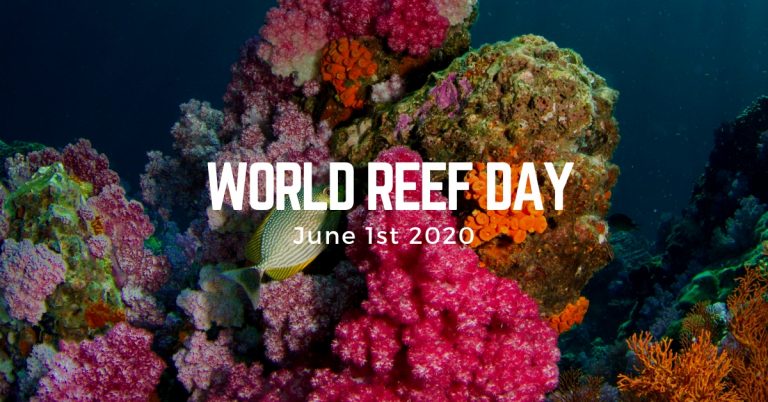
Today, June 1, we join the global celebrations of World Reef Day 2020. And with the second largest barrier reef in the world, Belize has lots to celebrate. After the inaugural World Reef Day in 2019, let’s look back at the importance of the reef and steps to take to protect them.
Stretching the length of the country, the Belize Barrier Reef has been, and will continue to be, a very integral part of our collective national identity. First inscribed as a World Heritage Site in 1996, the Belize Barrier Reef Reserve System (BBRRS) was placed on the List of World Heritage in Danger in 2009 due to the destruction of mangroves, marine ecosystem, offshore oil exploration prospects, and non-sustainable building projects. On June 26, 2018, BBRRS was officially delisted from being ‘In Danger’, however, we must collectively work to ensure its health and future is not compromised again. With threats like climate change and pollution threatening the world’s oceans and its coral reefs, you can practice reef-friendly habits to leave a ‘greener’ footprint. Here are 6 top tips on how you can do your part to protect the Belize Barrier Reef.
Reef-friendly UV Protection
The common sunscreen ingredient, oxybenzone, is known to damage coral DNA and make corals less resilient to coral bleaching. Avoid these UV-absorbing compounds by using a wide-brim hat, face buff, long-sleeved rash-guard, and reef-friendly sunscreen.

Photo by Carolee Chanona
Book responsibly
Vote with your dollar and choose tour operators that have taken actionable steps towards sustainability. Whether it be banning non-reef friendly sunscreen on their tours, avoiding single-use plastics, or pursuing specific eco-certifications, like Green Globe. Where demand goes, supply will follow.
Avoid plastic

Though Belize is still within a transition towards its single-use plastic ban, avoid single-use items now. Refusing bags, bottles, straws, and food containers helps to stop marine litter at the source. Whether we mean to or not, there’s always a chance the plastic we use may end up in the sea, and from there who knows? Never breaking down, micro-plastics either go into the food chain, sink to damage the seabed, or leach toxic chemicals.
Don’t touch
The hundreds of thousands of polyps on coral are sensitive to the oils and bacteria on human hands, while stirred sediments and flipper grazes from human interaction can smother or kill the living coral. Be mindful of your activity in the water, whether diving or snorkeling, by admiring the reef without touching. Similarly, coral can take decades to reach maturity, and if harvested, surrounding coral beds often do not recover.
Donate your time & effort
With 190 miles of reef, being a citizen science while enjoying recreational activities is a great way to play an active role in its conservation efforts, whether that’s sighting lionfish frenzies, coral health, or stranded wildlife. If you can, volunteer your time towards a local beach clean-up, volunteer with a local marine NGO. Get involved in a reef-conservation project.
Choose responsible seafood
Learn the seasons of local fisheries like conch, lobster, and more, by being a responsible consumer. In Belize, restaurants can get certified under the collaborative Fish Right, Eat Right campaign for guaranteed legal, healthy products. This program also helps restaurants identify alternative seafood options. This helps reduce fishing pressures on over-exploited, threatened, or endangered species.

